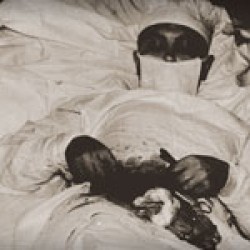
Scientists return this week to the world’s deepest known sinkhole, Cenote Zacatn in Mexico, to resume tests of a NASA-funded robot called DEPTHX, designed to survey and explore for life in one of Earth’s most extreme regions and potentially in outer space.
If all goes well with this second round of testing and exploration, the team will return in May for a full-scale exploration of the Zacatn system.
Sinking more than 1,000 feet, Zacatn has only been partially mapped and its true depth remains unknown.
During eight years of research, doctoral student Marcus Gary and hydrogeology professor Jack Sharp from The University of Texas at Austin’s Jackson School of Geosciences, discovered the system’s unusual hydrothermal nature is analogous to liquid oceans under the icy surface of Jupiter’s moon Europa.

Technology developed to explore the sinkholes could be applied to future space probes of Europa, where scientists believe that deep cracks and holes in the ice offer a chance of finding extraterrestrial life.
The technology could also be used to explore Earth’s ice-bound polar lakes, which hold clues to the origins of life on Earth.
Microbes which appear to be new to science have been discovered floating in deep water and lining rocks in Zacatn. Far below sunlight’s ability to penetrate, they may get their energy from nutrients welling up from hot springs. Gary and others speculate that previously undocumented life may await discovery in the murky depths.
William Stone of Stone Aerospace in Del Valle, Texas, heads the exploration project, named DEPTHX after the robot, a deep phreatic thermal explorer that NASA funded with $5 million. In addition to the geoscientists from The University of Texas at Austin, collaborators include robotics experts, engineers, geobiologists and geochemists from Carnegie Mellon University, Colorado School of Mines and Southwest Research Institute.
The probe is designed to map underwater caves, measure geochemical properties of the water, search for microbes and other life forms, and bring back samples for subsequent analysis.

The team conducted initial tests of the probe’s navigation capabilities in February, successfully mapping La Pilita, the second deepest sinkhole in the Zacatan system. Operations during this first mission showed that DEPTHX could find its way through underwater space, collect samples in unexplored areas and navigate back to the surface.
Unique in the world of robotic explorers, DEPTHX is autonomous. The probe does not rely on instructions from humans to decide where to go or what to do. It creates 3D maps of previously unexplored areas as it swims along and then uses those same maps to navigate back to the surface.
Cenote Zacatn first achieved notoriety when two divers attempted to reach the bottom in 1994. One of them, Sheck Exley, died in the attempt. The other, Jim Bowden, survived, descending to a record depth of 925 feet. The outcome caused scientists to rethink ways that Zacatn could be explored safely.
Gary first began visiting Cenote Zacatn in 1993 as a commercial diving guide. He was inspired by the unique environment to pursue a doctorate in geology. He has continued investigating the system of underwater caves to understand how they formed and evolved over time, working with a network of explorers and scientists to increase awareness of the system’s scientific value.
“We brought this place into international recognition with the cave community and now with the scientific community,” said Gary. “People in cave diving knew it was there because Sheck died there. He was a pioneer in cave diving and legendary for 30 years, holding previous world depth records. That’s all it was known for. Now it has potential for a lot of future research.”
External Links:
Prototype Space Probe Prepares To Explore Earth’s Deepest Sinkhole
Photos from DEPTHX-Zacatn Project











